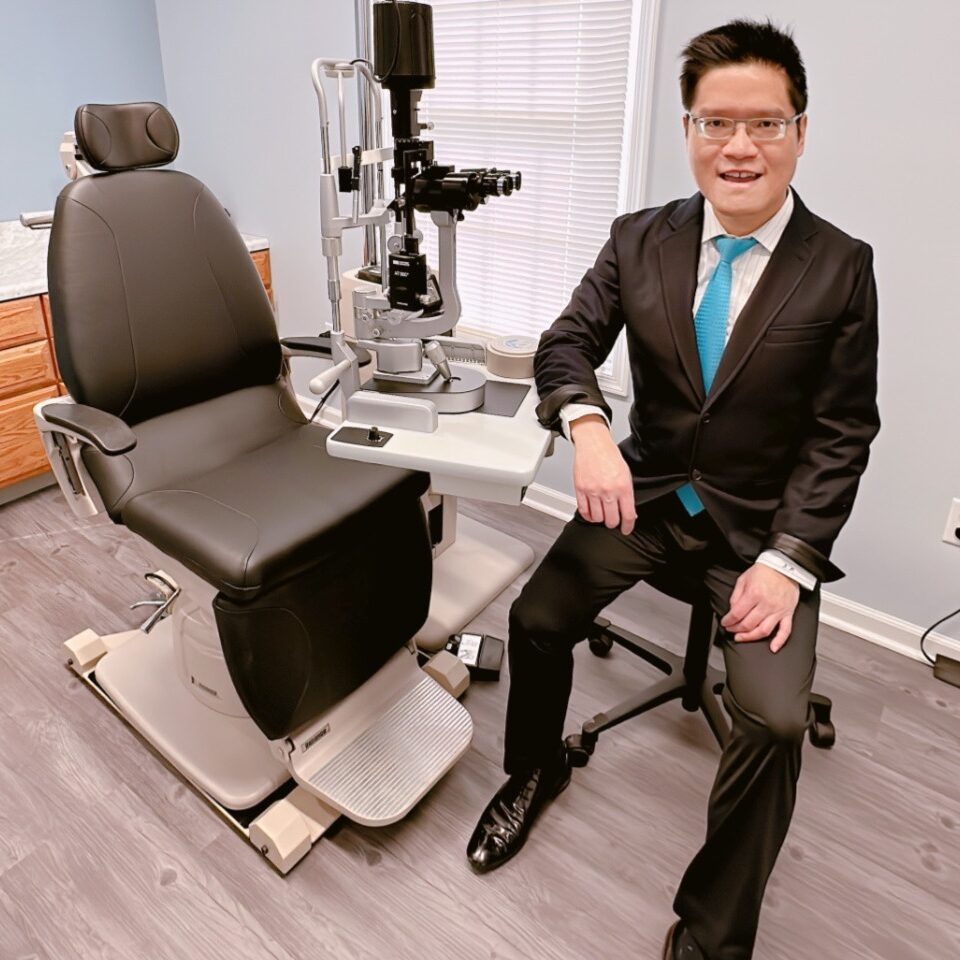Treatments
Dr. Pan, a Harvard trained vitreoretinal specialist, has extensive experience diagnosing and treating diseases of the retina and vitreous. Dr. Pan performs both in-office and outpatient hospital based procedures for the treatment of a vast array of retinal and vitreous diseases.

Our Services

Intravitreal Injections
What you need to know:
An intravitreal (pronounced in tra VIT re al) injection is a procedure to place medication directly into the space in the back of the eye called the vitreous cavity, which is filled with a jelly-like fluid called the vitreous humor gel.
Intravitreal injections are performed in the office, often with the patient reclined in a chair. First, the eye and eyelids are anesthetized using drops or gel so the injection doesn’t hurt. Sometimes a small numbing injection may be given.
The eye and the eyelids are then cleaned, usually using povidone-iodine, a yellow solution which is very effective at killing bacteria that live around the eye. An eyelid speculum is often used to keep the eyelids open during the procedure. Once the eye is prepped for injection, you will be asked to look in a particular direction depending on the location of the injection while the medicine is injected through the pars plana (the white part of the eye) with a very small needle.
Typically, patients feel pressure, with little or no pain during the injection. After the injection, the speculum is removed and the eye is cleaned.

Retinal Laser
What you need to know:
With laser surgery (photocoagulation), your ophthalmologist uses a laser to make small burns around the retinal tear. The scarring that results will seal the retina to the underlying tissue, helping to prevent a retinal detachment.
This is employed in the treatment of retinal holes, retinal tears, lattice degeneration, central serous retinopathy, diabetic retinopathy, retinal vascular diseases, and other abnormalities.

Vitreoretinal Surgery
Important Information:
Vitreoretinal eye surgery refers to a group of advanced, highly delicate procedures that are done deep inside the eye’s interior. Vitreoretinal surgery is performed in the part of your eye where the vitreous and retina are located. The vitreous is a jelly-like substance filling the cavity between the lens of your eye and your retina.
The purpose of vitreoretinal surgery is to restore, preserve and improve vision for a wide range of conditions. The most common reasons vitreoretinal eye surgery is performed include:
- Diabetic retinopathy: Complication of diabetes that damages blood vessels in the retina.
- Floaters and flashes: Flashes occur when vitreous moves around in the eye and pulls on the retina, creating a flash of light. Floaters occur when small substances form in the vitreous or from a retinal tear or a hemorrhage.
- Macular holes: Age-related condition in which the vitreous shrinks and pulls the retina, tearing a hole in a section called the macula (center of the retina where most focus occurs), affecting vision.
- Macular pucker: A wrinkle in the very small area of the retina that’s responsible for focus, causing distorted vision.
- Retinal detachments or tears: Tears in the retina or separation of the retina from the back of the eye. Patients experience a sensation like curtains closing in on their peripheral vision.
Vitreoretinal surgeries have high success rates, and patients should experience improved vision in just a few weeks. For most people, sight is either improved or restored. This is a positive outcome for those who would otherwise be left with permanent vision loss.
